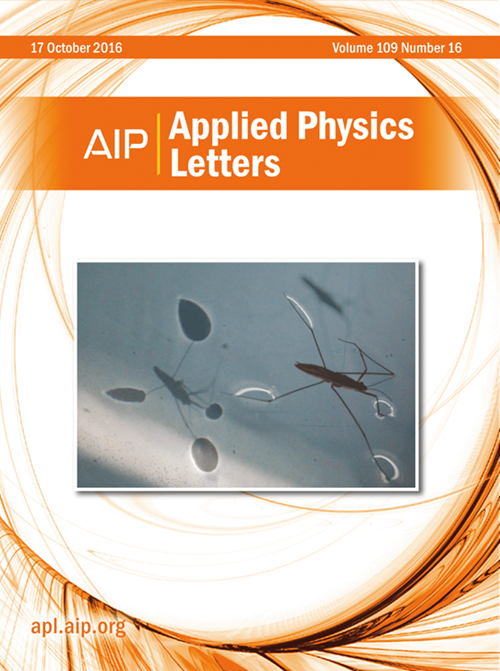Two-terminal photovoltaic neuromorphic device with temporal dynamics for reservoir computing
IF 3.5
2区 物理与天体物理
Q2 PHYSICS, APPLIED
引用次数: 0
Abstract
Photovoltaic (PV) neuromorphic devices with photocurrents under illumination as readouts have gained increasing attention due to their ultralow latency and excellent energy efficiency during reading process. However, they face significant challenges in processing temporal data because of the lack of inherent temporal dynamics, limiting their application in reservoir computing (RC) systems. Here, we have developed a simple two-terminal PV neuromorphic device based on an indium tin oxide/Nb-SrTiO3 oxide Schottky heterojunction, which features multi-level PV responses by adjusting the built-in electric field. The spontaneous recapture of electrons by charged defects leads to relaxation of the built-in electric field over time, providing inherent temporal dynamics for the PV device. Using this device, we designed a RC system that achieved high-accurate recognition of image letters and spoken-digits. This work offers an efficacious approach to design neuromorphic devices that combine temporal dynamics with low-energy consumption.求助全文
约1分钟内获得全文
求助全文
来源期刊

Applied Physics Letters
物理-物理:应用
CiteScore
6.40
自引率
10.00%
发文量
1821
审稿时长
1.6 months
期刊介绍:
Applied Physics Letters (APL) features concise, up-to-date reports on significant new findings in applied physics. Emphasizing rapid dissemination of key data and new physical insights, APL offers prompt publication of new experimental and theoretical papers reporting applications of physics phenomena to all branches of science, engineering, and modern technology.
In addition to regular articles, the journal also publishes invited Fast Track, Perspectives, and in-depth Editorials which report on cutting-edge areas in applied physics.
APL Perspectives are forward-looking invited letters which highlight recent developments or discoveries. Emphasis is placed on very recent developments, potentially disruptive technologies, open questions and possible solutions. They also include a mini-roadmap detailing where the community should direct efforts in order for the phenomena to be viable for application and the challenges associated with meeting that performance threshold. Perspectives are characterized by personal viewpoints and opinions of recognized experts in the field.
Fast Track articles are invited original research articles that report results that are particularly novel and important or provide a significant advancement in an emerging field. Because of the urgency and scientific importance of the work, the peer review process is accelerated. If, during the review process, it becomes apparent that the paper does not meet the Fast Track criterion, it is returned to a normal track.
 求助内容:
求助内容: 应助结果提醒方式:
应助结果提醒方式:


